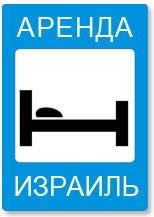
By observing the chart over a more or less long period of time, a rough direction can be discerned, which is called a trend. Depending on the temporal extent, three different trends can be defined.
- The primary trend can extend over the long term from one to several years.
- The secondary trend, which covers the medium-term range, lasts from three weeks to several months.
- The tertiary trend (short-term) extends from a few days to two weeks.
The trend line helps in the assessment
In the chart, upper and lower trend lines can be graphically displayed by connecting both the high and low points. If these are upward trending, they are called upward trend lines; if they are downward trending, they are called downward trend lines.
Recognising upward and downward trend channels
Upward trends are characterised by high points that are always higher than the previous high point. If, in addition, a high point can be connected to at least one higher high point in the price trend, and if this line runs parallel to the upward trend line, this graphical construct is called an upward trend channel.
The uptrend is considered broken when the share price breaks the uptrend line downwards. Even if a stock has only moved upwards for many years, at some point investors have to expect longer sideways phases or even price corrections.
What applies to the upward trend channel naturally applies in reverse to the downward trend channel. However, it is important for all investors, whether they want to buy or sell, to recognise trend reversal points and adjust their activities accordingly.
When should investors act?
The big question that all investors face from time to time is: when is the most opportune time to buy or sell?
The person pursuing a speculative strategy should buy when the lower uptrend line in Exness Asia and Singapore terminal is touched. However, he can also wait for confirmation that the price will turn back into the trend channel and not break the lower trend line negatively. This will test the trend line successfully one more time. If the upper upward trend line is touched, sell.
Investors who pursue a conservative strategy also buy when the lower upward trend line is touched, but continue to hold the share after the upper upward trend line is touched. The share is only sold when the long-term upward trend has been negatively broken.

Tips for the chart-technically oriented
Investors should always wait for the trend reversal, otherwise there is a risk of buying a share that continues to suffer price losses. An old stock market adage is: "Never reach into a falling knife".
An often-heard assessment "This share can't fall any lower" leads to the many investment mistakes, because a share can always fall, especially when it has left an intact upward trend.
The following applies to all stock market investors: It is better to give up a few percentage points, but gain a certain amount of security in return.
|



 +972 3 7631172
+972 3 7631172
 +972 52 5961777
+972 52 5961777
 +380 67 5221402
+380 67 5221402 
 +7 495 662-87-22
+7 495 662-87-22 

